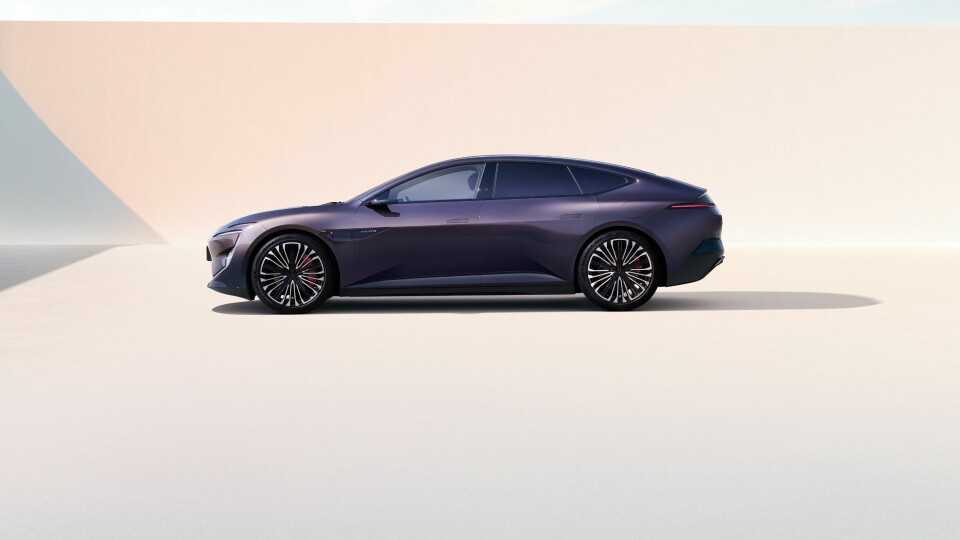
Avatr 12 gran coupe blends Chinese innovation with European flair
The Avatr 12 was unveiled to the world this year at IAA in Munich and is going on sale this week in China. The “monolithic” gran coupe without a rear window shines, thanks to a design team assembled from European luxury brands
We first saw the Avatr 12 flagship gran coupe in the metal this year at the IAA in Munich, followed by a closer look during a small media program on the shores of Lake Como, Italy. Now, the car has just gone on sale in China where the company hopes to expand its reach, both at home and beyond.
The followup to the China-only Avatr 11 crossover, the Avatr 12 shares the same platform and the same design DNA. “Design in our company is the driving force,” says chief design officer Nader Faghihzadeh, a former BMW designer whose credits include the exterior design of the 3rd generation 6 Series coupe. “The name Avatr means the embodiment of yourself. We are reflecting the user and the user’s aspirations. We want the brand to be your emotional intelligence companion.”
Unlike many examples of cars created for the Chinese market, the interior design doesn’t overwhelm with giant screens
A joint venture between Changan Automobile, Huawei, and Chinese battery manufacturer CATL, Avatr keeps its R&D headquarters in China, while its global design studio sits in Munich, not far from the sprawling Motorworld luxury retail complex and its adjacent private drivers’ club. A roster of about 50 designers work in the studio, coming from the likes of BMW, Audi, and Mercedes-Benz, a testament to the shrewd strategy of basing design efforts in a highly desirable European city — as opposed to convincing talent to move to China.
The exterior design of the Avatr 12 starts with a gran coupe silhouette, with a flat roofline and short overhangs. Size-wise it is slightly shorter than the BMW i5 and sits between the Mercedes-Benz EQS and EQE, with a wider track than all of the above. Avatr hops on the slim lighting trend with an LED lighting signature that frames the front face, with horizontal wraparound tail lamps in the rear.
Notably, the car lacks a rear window in favour of a long glass roof in a similar vein to the Polestar 4 coupe launched at Auto Shanghai earlier this year.
“The rear window was deleted, enabling this responsive capsule,” Faghihzadeh explains. “The exterior design is monolithic and very refined.” Sleek surfacing is inspired by the idea of an energy force, with slightly muscular fenders and strong horizontal “gravity lines” that run along the body side.
Setting the Avatr 12 apart is a “halo” display, an LED panel on the bonnet that allows drivers to display messages to those outside the vehicle, but Faghihzadeh insists it’s not a mere gimmick. “We bring uniqueness on the physical side as well as the digital side, but there is nothing without a reason,” he says. “It’s about this shared experience and how the car interacts with you.”
The company may have an uphill battle to fight, with Chinese-owned brands such as BYD, Nio, Lotus, and Great Wall reporting triple-digit growth in Europe compared with 2022, or it may benefit from a rising tide lifting all boats
Interior design was led by Maksymilian Nawka, whose past accomplishments include the interior of the Audi Grandsphere concept we saw at IAA in Munich in 2021. Unlike many examples of cars created for the Chinese market, the interior design doesn’t overwhelm with giant screens. True to Nawka’s past work, it’s based on a relatively minimalist lounge theme with floating elements and a curved integrated display across the wraparound IP. A central landscape-oriented screen serves as the primary display.
Bold colours and textures add visual interest without looking cluttered, such as the plum-coloured dashboard and patterned wood on the centre console, which is equipped with invisible inductive charging ports. These are thanks to colour and trim director Bohzena Lalova, who worked for more than six years at Mercedes-Benz, followed by a three-year stint at Genesis.“We are a new brand so we want to bring excitement through the design language to the customer — not only with the exterior, but with the interior and colour and trim,” she says. “To that end, we are doing things a little more unexpected and special, a modern luxury beyond the classical approach.”
Some elements are inspired by Avatr’s home country, such as the mother-of-pearl trim, put together by hand and pressed into a veneer, based on Chinese lacquer technique. But Lalova stresses that the design team also looks globally for inspiration. “Our job is to get a lot of input coming from where we each live,” she says.
The Avatr 12 is on sale now in China, with a rear-wheel drive variant that makes 230 kW (about 313 hp), as well as an all-wheel-drive model with 425 kW (about 578 hp). It is equipped with a CATL-supplied, 94.5 kWh lithium-ion battery pack, with a competitive estimated range between 650 to 700 kilometres on a single charge.
Avatr has previously confirmed it’s looking to expand into other markets, including Europe, Southeast Asia, and possibly the UK and/or Australia, as it previously confirmed it was looking into developing a right-hand-drive version. The company may have an uphill battle to fight, with Chinese-owned brands such as BYD, Nio, Lotus, and Great Wall reporting triple-digit growth in Europe compared with 2022, or it may benefit from a rising tide lifting all boats.
Regardless, Faghihzadeh is optimistic that his team’s approachable design philosophy will endear itself to customers. “In a world where products are mere objects, Avatr is a friend,” he says. “A mirror to your aspirations, a vessel for your essence, and a partner for your journey.”






























